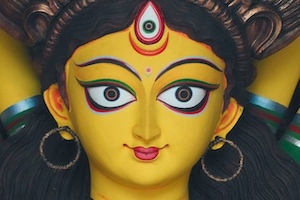Annapurna one of most enchanting forms of Durga
The Statesman | 5 April 2025“Annapurna, you are the embodiment of beauty; devoid of food, you are terrifying…” Rabindranath Tagore had once written.
To the poet, she is earth or nature, but to the spiritual seeker, she is Mahaprakriti, the Supreme Shakti, the universal mother, Durga. Annapurna is one of the most enchanting forms of Durga.
According to Tantric tradition, Annapurna Puja is performed in Bengal on the Ashtami Tithi (eighth lunar day) of the bright fortnight of the month of Chaitra. After the worship, it is customary to serve food (prasada) to a large number of devotees.
Legend has it that once, during a game of dice with his consort Parvati (Mahamaya), Shiva mockingly called her “Maya,” meaning an illusion or non-existent. Offended, the Goddess left Mount Kailash. In her absence, a famine spread across the three worlds. Though Shiva began begging for alms, due to the Goddess’s displeasure, no one offered him any food. Then he heard that a woman in Kashi (Varanasi) was distributing food. Upon arriving there, he saw that it was Parvati herself, who had taken the form of Annapurna, the Goddess of food.
As Shiva received alms from her and began dancing in joy, the Goddess was pleased. To glorify her divine power, Shiva established a temple for Annapurna in Kashi, where she is said to have manifested on the Ashtami of Chaitra. Thus, Annapurna Puja became a tradition.
According to the Dhyana Mantra (meditative verse), Goddess Annapurna is clad in red or colourful garments, adorned with a crescent moon on her crown. She is always engaged in the distribution of food. Seeing Shiva dance joyfully upon receiving alms, she becomes pleased.
Historically, it is believed that Adi Shankaracharya established the Annapurna temple in Varanasi and installed golden idols of the Goddess along with her attendants Jaya and Vijaya. He also initiated the tradition of daily and special worship, as well as the Annakut (mountain of food) offering. His composition “Annapurna Stotra” praises the Goddess’s glory in elegant and poetic language.
